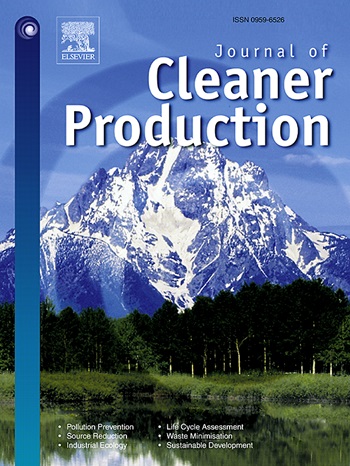调节离子迁移路径以增强焦耳热效应和利用脉冲直流电去除致密非水相液体
IF 9.7
1区 环境科学与生态学
Q1 ENGINEERING, ENVIRONMENTAL
引用次数: 0
摘要
基于脉冲直流电(PDC)的电阻加热(ERH)是一种新型的原位修复致密非水相液体(DNAPL)污染场地的技术。但加热的均匀性和稳定性仍需进一步提高。在本研究中,我们提出了一种通过调节多孔介质中的离子行为来优化PDC加热过程的有效策略。引入液压循环(流场控制)和间歇性极性反转(电场控制)作为离子行为的调节措施,使平均温度、加热均匀性、EC和离子分布均匀性、DNAPL去除和能源效率得到全面改善。与非调节系统相比,加热均匀性得到了显著改善,变化系数降低了约40%,平均温度提高了15-30°C。离子和EC分布的均匀性显著增强,同时有效地防止了严重的局部离子耗尽,证明了调节离子迁移途径的重要性。采取这些措施后,氯苯DNAPL的去除效率提高了19.8% ~ 37.8%,能耗降低了12.8% ~ 47.5%。这些发现表明,调节离子迁移途径是优化PDC热修复的一种很有前途的方法。本文章由计算机程序翻译,如有差异,请以英文原文为准。


Regulating the ion migration pathways to enhance Joule heating effect and dense nonaqueous phase liquid removal using pulsed direct current
Electrical resistance heating (ERH) based on pulsed direct current (PDC) is a novel and promising in-situ technology for the remediation of dense nonaqueous phase liquid (DNAPL) contaminated sites. However, the uniformity and stability of heating still require further improvement. In this study, we proposed an effective strategy for optimizing the PDC heating process by regulating the ion behavior within porous media. Hydraulic circulation (flow field control) and intermittent polarity reversal (electric field control) were introduced as regulation measures for ion behavior, leading to overall improvements in average temperature, heating uniformity, EC and ion distribution uniformity, DNAPL removal, and energy efficiency. Compared to the unregulated system, heating uniformity improved significantly, with approximately a 40 % reduction in the coefficient of variation and a 15–30 °C increase in the average temperature. The uniformity of ion and EC distribution was significantly enhanced, while severe local ion depletion was effectively prevented, demonstrating the importance of regulating ion migration pathways. Following these regulatory measures, chlorobenzene DNAPL removal efficiency increased by 19.8 %–37.8 %, while energy consumption decreased by 12.8 %–47.5 %. These findings suggest that regulating the ion migration pathways was a promising approach for optimizating thermal remediation using PDC.
求助全文
通过发布文献求助,成功后即可免费获取论文全文。
去求助
来源期刊

Journal of Cleaner Production
环境科学-工程:环境
CiteScore
20.40
自引率
9.00%
发文量
4720
审稿时长
111 days
期刊介绍:
The Journal of Cleaner Production is an international, transdisciplinary journal that addresses and discusses theoretical and practical Cleaner Production, Environmental, and Sustainability issues. It aims to help societies become more sustainable by focusing on the concept of 'Cleaner Production', which aims at preventing waste production and increasing efficiencies in energy, water, resources, and human capital use. The journal serves as a platform for corporations, governments, education institutions, regions, and societies to engage in discussions and research related to Cleaner Production, environmental, and sustainability practices.
 求助内容:
求助内容: 应助结果提醒方式:
应助结果提醒方式:


